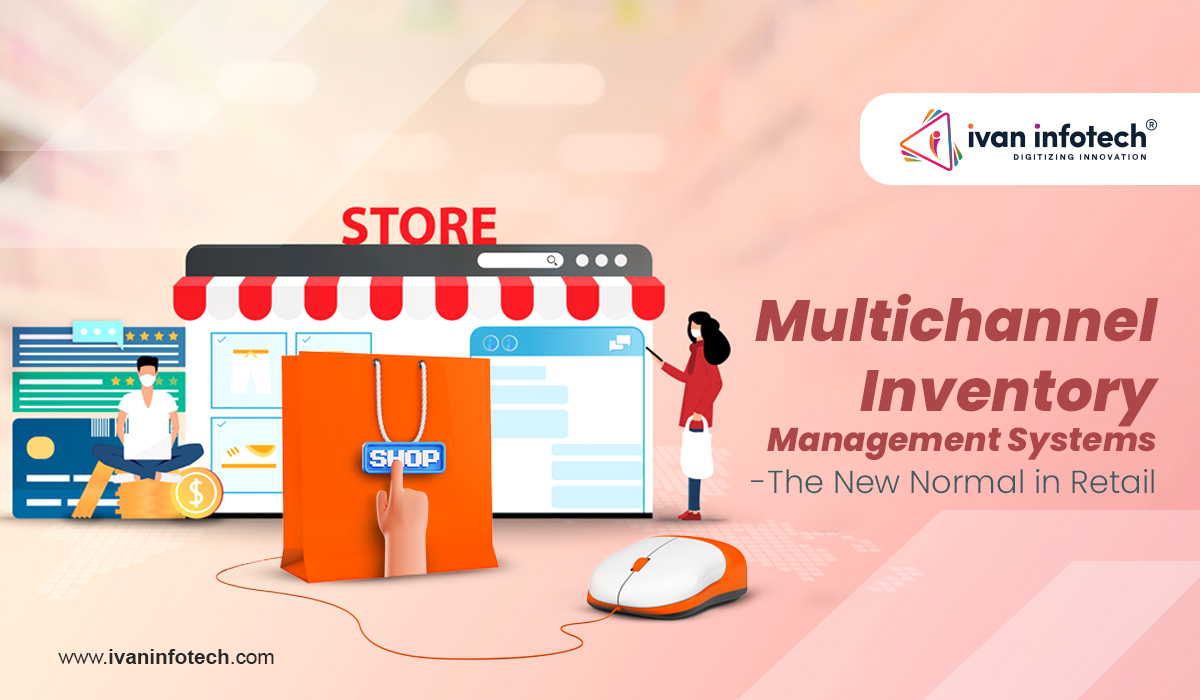
The Future of Retail: Multichannel Inventory Management
Today, retail brands are expected to stay linked to their customers across a range of online environments, because customers expect it.
Tech savvy customers are accustomed to convenience in all spheres of life and demand a seamless buying experience across various sales channels be it brick-and-mortar stores, catalogues, online platforms, social media channels or online marketplaces.
This is where multi-channel retailing comes in, the approach where you maintain a presence on various channels that your customers frequent and meet their demands seamlessly. This ensures that the buying journey doesn’t come to a halt when customers don’t find their channel or platform preference. Retailers currently depend on retail software development solutions.
For efficient order fulfilment, no matter the platform via which orders are made you need to have to continuously be aware of the stock levels, inventory location, and the means by which inventory can be automatically shipped from the warehouse in the vicinity of the customer.
Why Choose Multichannel Inventory Management Systems
As a retail store’s quantity of orders keeps increasing, and they branch out into several platforms, it would be counter-productive to get bogged down by the laborious process of signing in and out of platforms to enter product details and manage orders.
Retail software solutions like inventory management systems allow you to boost sales, enhance efficiency and steer clear of the potential of overselling while your business expands and multiple sales channels are put into play.
Automate and streamline every sales channel
Controlling inventory that spans a range of channels simultaneously is tedious to say to least, particularly when multiple new channels are included in your strategy. In this case you’d need to invest your efforts in business growth as opposed to handling supply bottlenecks.
With automation-based inventory management systems you get real-time overview of your stock levels spanning your complete supply chain, allowing you to fulfil the delivery with the committed time limit.
Efficient product description creation
Listing software that integrates multiple channels saves you a vast amount of effort and time, as you would not need to manually enter in the product descriptions for each different platform. In the interest of saving time and more so to maintain uniformity for customers that interact with your business, after the initial manual entry, the system automatically shares the details among other channels to promote a seamless buying experience. That’s the power of retail software development solutions.
Demand forecasting
Many retailers opt for tailor-made multichannel inventory control solutions to extract actionable insights, leading to increasingly effective executive decisions that drive higher revenue. Features like demand forecasting enables you to stock in-demand products, maintain the ideal amount of inventory distributed among the different channels you use, thus ensuring that there is no oversale. What’s more retailers can get inventory levels down to the usual amounts once a particular spike in demand subsides.
Enhanced customer experience
Products need to be on hand when a customer’s order comes in. It’s important to ensure that the inventory is available and the customer receives their order without uncalled for delay. In this way you gain highly satisfied customers and repeat customers who are loyal to your brand.
All-inclusive reports
When you use retail software development solutions like multi-channel inventory platforms you will be able to benefit from comprehensive analytics and reports on various different aspects such as:
- DSI or days to sell inventory, calculates the average amount of time a product stays in stock prior to being sold
- Inventory turnover, refers to the total times a product is sold and restocked during a set period.
- Return rate, relates to the percentage of inventory that customers return
- Holding costs indicates the sum of all costs needed to maintain a product in stock
- Stock out, refer to times when inventory has been exhausted and is unavailable for order fulfilment
- Inventory accuracy denotes the difference between the warehouse stock that’s on record in your inventory management platform and the actual inventory that’s on shelves.
Demand tracking
Data is the key agent of insightful business decisions. To streamline inventory it is vital to track customer demand.
Using a multi-channel inventory solution enables you to monitor highest selling and lowest selling products on third-party platforms. You will be able to accommodate seasons such as Valentine’s Day, Christmas etc. All that’s left to be done is backtrack to the prior archives and isolate high demand products. This way you will be able to make accurate purchase orders and smoothly accommodate customer demands.
Customers are known to opt for buying experiences from the convenience of channels where they choose to spend their time. With this intel, retailers are now revolutionising their business potential through retail software such as multichannel inventory management platforms. There would be zero manual effort on your part when you use retail software development solutions like multi-channel inventory platforms. Get started today and connect everything that streamlines your retail processes across multiple popular channels.
Subscribe to the Newsletter
Don’t lag behind in the ever-evolving age. Stay updated with all tech news and trends. We will not fill your inbox with spam mails. You will only receive updates about the cream contents.
Want Assistance with Software Development?
Anything you need in terms of software, you can count on us. With knowledge, skills and years of experience, we create tailor-made, integrated development solutions with high-end technologies.


Categories
Ai software solution
API Development Services
app development
Application Maintenance
AR And VR Software Development
AR Software Development
Artificial Intelligence
Asset Tracking
Automated system
Big Data
Block Chain Development
Blockchain Development Solution
cloud computing solutions
CMS Development Services
Construction Software Solution
CRM
custom web application
Digital Asset Management
Digital Marketing
Digital Services
Ecommerce Industry Solutions
ecommerce solution provider
Education Software Development
education software development Solution
Education Software Solution
ERP Software Development
Event Ticketing Software Solution
Finance Software Solution
Food and beverage software
Graphic Design
Healthcare software solution
hospitality software development solutions
hotel software solution
IMS
IOT
IT application development
IT Consultancy
IT services
IT solutions
Java
Java App Development
Lead Generation Services
Legal Software Development
mobile app design
opensource software development
pos software development Solution
Quality Assurance
Real estate software
Restaurant Software Solution
Retail IT Solutions
Retail Management Software
software development
Software Security
Software Testing
Sports Software Development
Supply Chain Software Solution
Transportation Software Development
Travel & Hospitality
UI and UX design
Uncategorized
Web Design
Web development service
Web Programming